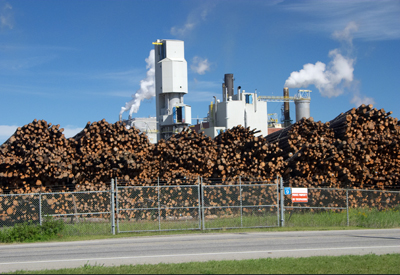Energy Efficiency in Pulp & Paper Mills
 While only a little more than 20% of the total energy demand of pulp and paper facilities is electricity, there are still changes and upgrades that can be made to save electrical energy. Conducting assessments of motors and pumps, fans, and compressed air systems can help you identify areas where efficiency can be increased. For example, replacing pneumatic conveyors with belt conveyors can be successful in reducing electrical use by almost 1%. Additionally, identifying and replacing pumps that are oversized, have worn impellers, or operate while upstream valves are closed or only partially open can save energy and money. Lastly, motors that have been rewound more than once also hamper the return of electricity in phase.
While only a little more than 20% of the total energy demand of pulp and paper facilities is electricity, there are still changes and upgrades that can be made to save electrical energy. Conducting assessments of motors and pumps, fans, and compressed air systems can help you identify areas where efficiency can be increased. For example, replacing pneumatic conveyors with belt conveyors can be successful in reducing electrical use by almost 1%. Additionally, identifying and replacing pumps that are oversized, have worn impellers, or operate while upstream valves are closed or only partially open can save energy and money. Lastly, motors that have been rewound more than once also hamper the return of electricity in phase.
A longer term strategy for generating electricity on-site is to install combined heat and power (CHP) systems at your facility. These CHP systems can potentially use available steam at high pressure to generate electricity. Integrated systems can also use paper sludge and other biomass as the natural gas material to feed the boiler, heating the dewatered extract from the paper waste, and depressurizing the steam through a turbine. Pulp and paper mills are typically ideal for a CHP system, since the facility is generally equipped with the infrastructure and the thermal demand is a daily constant.
Lighting and HVAC changes also serve as potential for electrical energy savings.
Resources
- MnTAP Intern Summary: Boise Cascade (2007). The facility worked with a MnTAP intern to increase energy efficiency and reduce water by improving the compressed air system, insulating steam lines, and replacing spray nozzles.
- MnTAP Intern Summary: Rock-Tenn Company (2004). The paper mill insulated steam and condensate lines and saved over $170,000 annually by reducing energy use.
- Pulp and Paper Industry Energy Bandwidth Study
- Pulp and Paper Industry Energy Best Practice Guidebook
- ENERGY STAR: Focus on Energy Efficiency in Pulp and Paper Manufacturing
- Industrial Efficiency Technology Database: Pulp and Paper